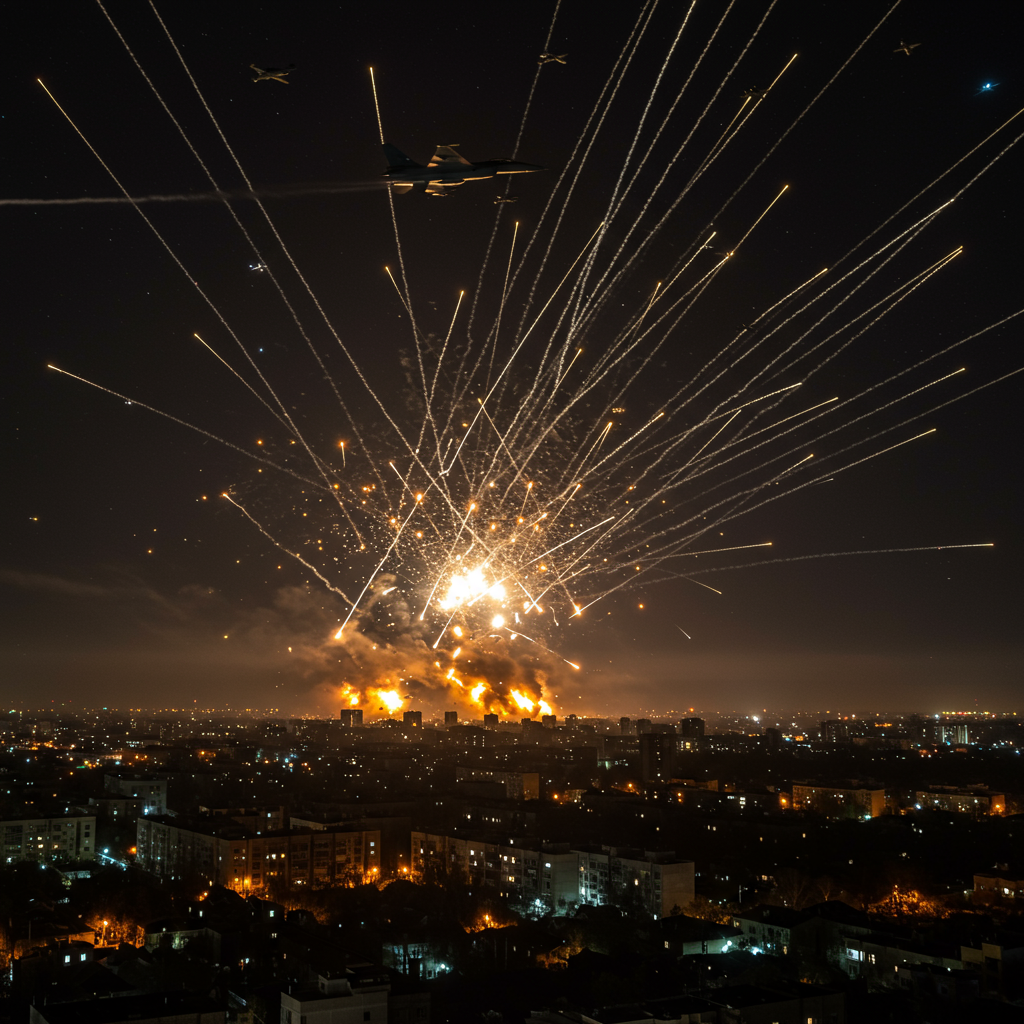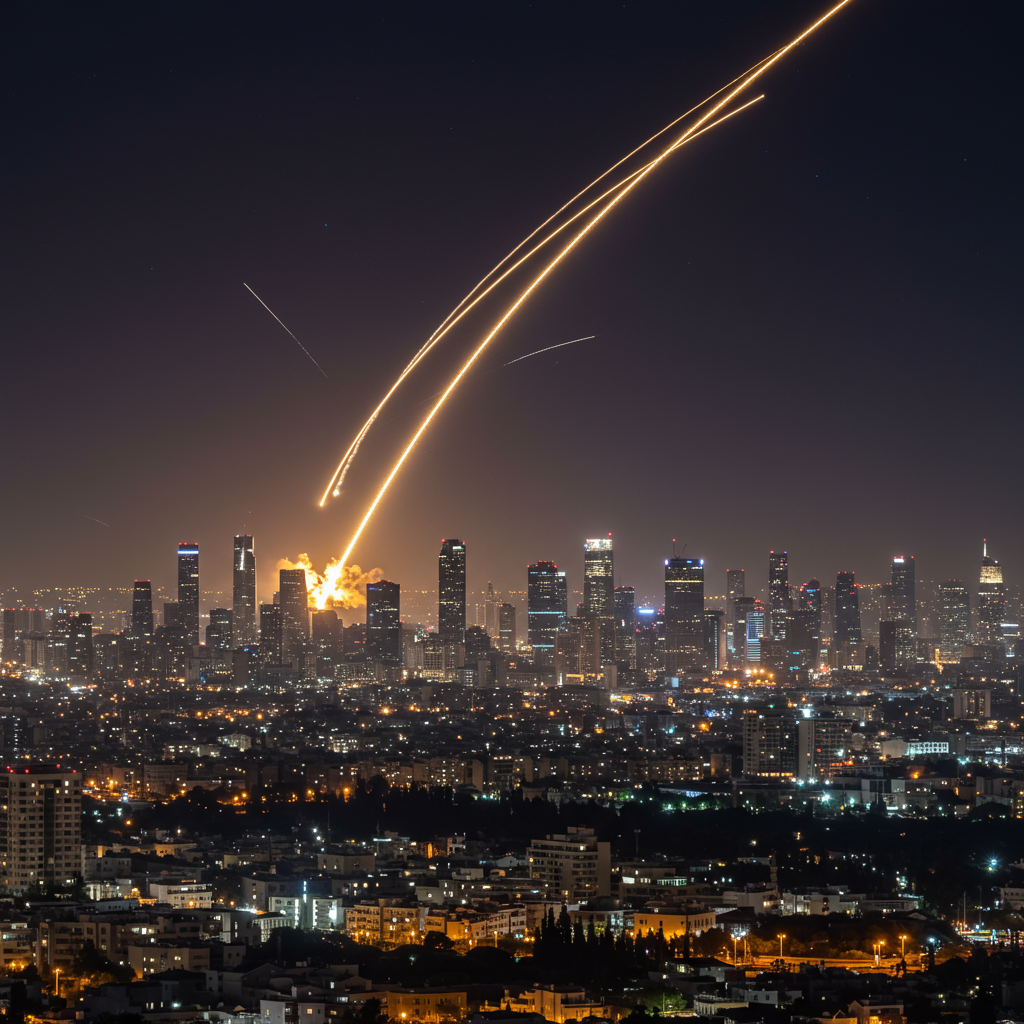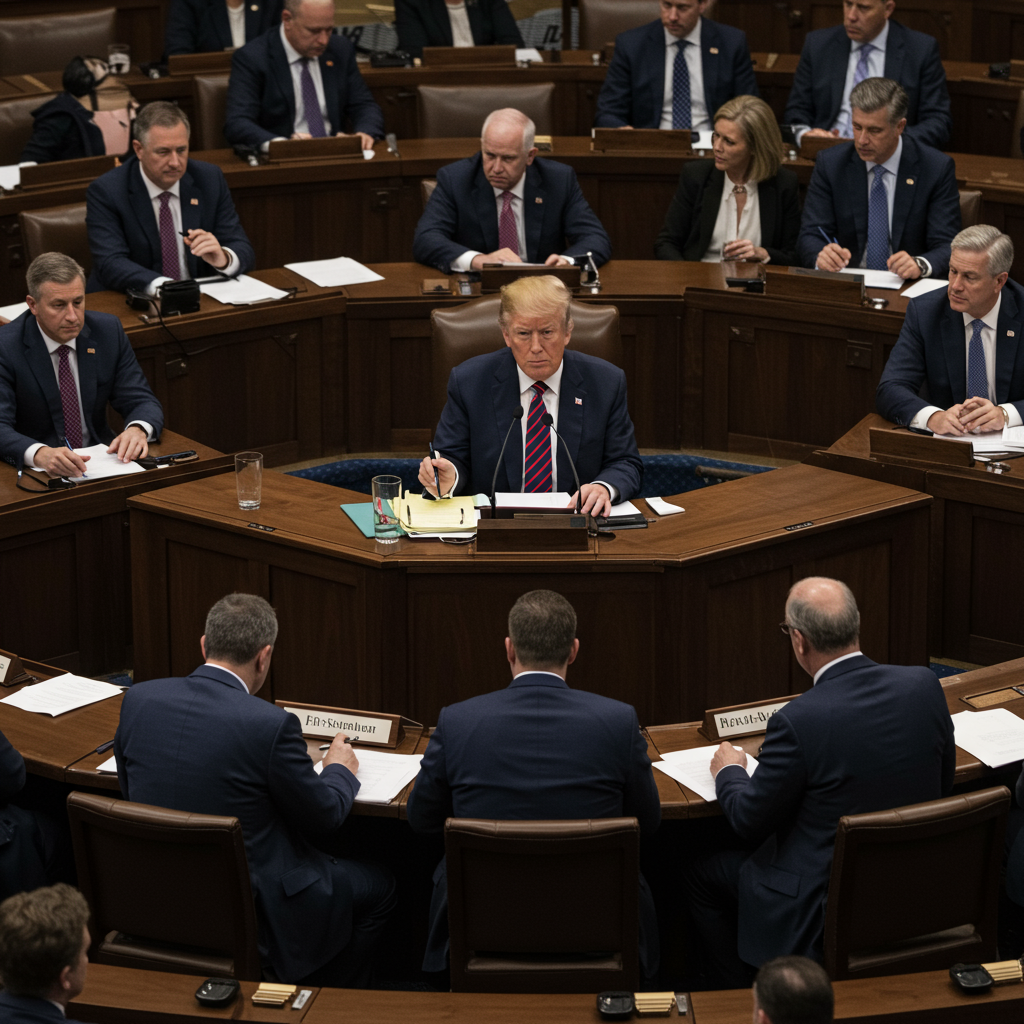ukraine endured Russia’s most extensive aerial bombardment since the start of the full-scale invasion. Overnight into Sunday, June 29, 2025, Moscow unleashed a massive barrage across multiple ukrainian regions. This assault involved hundreds of drones and missiles, targeting cities and critical infrastructure nationwide. Ukrainian air defenses worked tirelessly to repel the onslaught. Tragically, the defense effort resulted in the loss of a brave Ukrainian F-16 pilot. This event underscores the escalating nature of the conflict and highlights Ukraine’s urgent need for advanced Western air defense systems.
Unprecedented Russian Air Assault Sweeps Across Ukraine
The scale of Russia’s recent attack on Ukraine was unprecedented. Ukrainian officials reported a total of 537 incoming aerial weapons. This included a complex mix of strike drones and various missile types. The bombardment began Saturday evening and continued for over six hours. It targeted locations far and wide, from Cherkasy in the center to Lviv near the Polish border.
Other impacted regions included Poltava, Kharkiv, Kherson, Mykolaiv, and the capital, Kyiv. The intensity and duration of the attack marked it as the largest such assault since early 2022. Reports confirmed numerous impacts across the country. These strikes injured over a dozen people and caused significant damage. Residential buildings, storage facilities, and vital infrastructure sustained hits. Specific damage was noted at a college and multi-storey residential buildings in Cherkasy and Smila. Industrial sites in the Mykolaiv and Dnipropetrovsk regions were also targeted. In Lviv region, a drone strike ignited a large fire at an industrial facility. This resulted in power outages in the town of Drohobych.
Russia’s Defense Ministry claimed its strikes targeted Ukraine’s military industry and oil refineries. They asserted that the objective of the “massive strike with high-precision long-range air, sea and land-based weapons” was fully achieved. Ukrainian officials, however, stated that energy facilities, infrastructure, and residential areas were primarily hit.
Ukrainian Defense Efforts and Tragic Loss of F-16 Pilot
Ukrainian forces mounted a determined defense against the massive incoming swarm. They utilized their full range of defensive capabilities, including ground-based air defense systems and combat aircraft. Reports indicate Ukrainian defenses successfully intercepted hundreds of the projectiles. Figures varied slightly across sources, but Ukrainian forces reported shooting down 475 of the incoming targets according to one account. Another report detailed the interception of 436 drones and 38 missiles. Despite these efforts, projectiles that evaded defense or debris from intercepted targets impacted sites in several locations.
Amidst these intense defensive operations, Ukraine suffered a tragic loss. Lieutenant Colonel Maksym Ustymenko, a Ukrainian F-16 pilot, was killed. The 31-year-old pilot died overnight Sunday while actively engaging Russian targets. According to the Ukrainian Air Force, Lt. Col. Ustymenko displayed exceptional bravery. He successfully shot down seven aerial targets during the attack. His F-16 fighter jet was then damaged while he attempted to intercept an eighth. Ukrainian officials stated that despite the critical damage, he managed to steer the disabled aircraft away from residential areas. He was unable to eject and perished in the crash. The Ukrainian Air Force hailed him as a hero for his final actions and sacrifice.
This incident marks a significant blow to Ukraine’s nascent F-16 fleet. Ukraine reportedly began using its first F-16s supplied by Western allies in August 2024. This appears to be the third F-16 confirmed lost by Ukraine since receiving the jets. The jets are considered a crucial asset for intercepting Russia’s increasingly sophisticated aerial attacks. Ukrainian President Volodymyr Zelenskyy confirmed Lt. Col. Ustymenko’s death and ordered a full investigation into the circumstances.
Kyiv Renews Urgent Calls for Enhanced Air Defense Systems
The severity and scale of this attack prompted renewed urgent appeals from Kyiv for international military support. President Zelenskyy emphasized that Ukraine requires robust protection against ballistic missiles, cruise missiles, drones, and other forms of aerial terror. He stated clearly that strengthening Ukraine’s air defense is paramount. “This is the thing that best protects lives,” Zelenskyy stressed.
He specifically highlighted the need for American defense systems, such as the Patriot missile system. Zelenskyy reiterated Ukraine’s readiness to purchase these systems. He called on the United States, Europe, and all partners to demonstrate leadership, political will, and continued support. The Ukrainian President noted that Russia has intensified its attacks significantly since launching its summer offensive. He cited alarming figures from the preceding week alone: over 114 missiles, more than 1,270 drones, and nearly 1,100 glide bombs. Zelenskyy asserted that Russian President Vladimir Putin remains determined to wage war despite global calls for peace. He warned that Moscow would continue launching massive strikes as long as it possessed the capability.
The call for Patriot systems follows recent comments from former U.S. President Donald Trump. While speaking in The Hague, Trump indicated the U.S. might explore making Patriot systems available to Ukraine. However, he also noted the scarcity of these systems. Trump mentioned that the U.S. needs them domestically and cited their effectiveness for allies like Israel. The strategic importance of systems capable of intercepting advanced Russian projectiles, including hypersonic weapons like the Kinzhal reportedly used in some attacks, remains a key concern for Ukraine.
Wider Context and Related Developments
The massive Russian assault triggered responses from neighboring allied nations. Poland’s Armed Forces Operational Command scrambled Polish and NATO jets. They also raised the readiness of ground-based air defense and radar reconnaissance systems in areas bordering Ukraine. These forces were later stood down once the immediate threat subsided. The attack on Lviv region, close to the Polish border, directly contributed to this heightened state of alert.
Meanwhile, Russia also reported its own defensive actions. The Russian Ministry of Defense claimed its forces shot down three Ukrainian drones overnight. These intercepts reportedly occurred in the border regions of Kursk and Rostov within Russia and over the annexed Crimean Peninsula. Russia also claimed one fatality in the Russian-controlled part of Ukraine’s Luhansk region due to a Ukrainian drone. Separately, Russia asserted control over the village of Novoukrainka in the partially occupied Donetsk region on Sunday.
Adding another layer to the conflict’s complexity, Kyiv conducted its own counter-strike on Saturday. Ukrainian officials reported a successful drone attack on the Kirovske airfield in occupied Crimea. The Security Service of Ukraine (SBU) stated the strike targeted areas housing Russian aviation units, air defense systems, ammunition depots, and unmanned aerial vehicles. They claimed the attack destroyed several Russian helicopters, including Mi-8, Mi-26, and Mi-28 models, and a Pantsir-S1 missile and gun system.
This wave of intense violence occurred shortly after Russian President Vladimir Putin’s recent statements. On Friday, Putin reportedly indicated an intention to reduce military expenditure and expressed readiness for peace negotiations. The scale and nature of the subsequent weekend attack appear to contradict these statements. The conflict, now in its fourth year, shows no immediate signs of a ceasefire, despite previous unsuccessful peace talks and limited cooperation on prisoner exchanges.
In a related development highlighting the strategic challenges Ukraine faces, President Zelenskyy signed a decree to initiate the process of withdrawing Ukraine from the Ottawa Convention. This international treaty prohibits the use of anti-personnel mines. Ukraine’s Ministry of Foreign Affairs justified the decision. They stated Ukraine is “compelled to give unconditional priority to the security of its citizens and the defence of the state” in the face of the Russian invasion. Ukrainian lawmakers argued Russia uses mines extensively against Ukrainian military personnel and civilians. They noted Russia is not a signatory to the treaty and therefore not bound by its restrictions. The withdrawal requires ratification by Ukraine’s parliament and notification to the United Nations. The decision is presented as following similar actions by neighboring countries like Poland, Finland, Lithuania, Latvia, and Estonia, who also share borders with Russia.
Frequently Asked Questions
What made this Russian air attack on Ukraine the largest of the war?
This attack was characterized as the largest since the start of the invasion based on the sheer volume of projectiles used. Ukrainian officials reported 537 incoming aerial weapons, including a combination of drones and various missile types. The assault lasted over six hours and targeted numerous regions across the country simultaneously. This scale surpassed previous bombardments.
Who was Lt. Col. Maksym Ustymenko, the Ukrainian F-16 pilot killed?
Lieutenant Colonel Maksym Ustymenko was a 31-year-old Ukrainian Air Force pilot. He was killed on Sunday, June 29, 2025, while actively defending Ukraine against the massive Russian air attack. Flying an F-16 fighter jet, he successfully intercepted seven aerial targets before his aircraft was damaged. He was lauded as a hero for steering the damaged jet away from residential areas before crashing.
How is Ukraine defending against these massive Russian missile attacks, and what aid is needed?
Ukraine employs a combination of ground-based air defense systems and combat aircraft, including F-16s provided by Western allies, to intercept incoming Russian missiles and drones. While successful in downing a large percentage of targets, the sheer scale and frequency of attacks challenge Ukraine’s resources. President Zelenskyy has repeatedly called for increased international aid, particularly for advanced air defense systems like American Patriot missiles, which Ukraine is ready to purchase, to better protect civilian lives and infrastructure.
Conclusion
The recent massive Russian air attack on Ukraine serves as a stark reminder of the conflict’s brutal reality. It highlights Russia’s willingness to escalate aerial bombardment and inflict widespread damage. The tragic loss of Lt. Col. Maksym Ustymenko underscores the immense personal cost of defending against these assaults. Ukraine’s urgent need for enhanced air defense capabilities is more critical than ever. As Russian attacks persist, international support remains vital for Ukraine’s ability to protect its population and critical infrastructure. Continued pressure on Moscow and sustained military aid are essential steps towards mitigating the impact of these large-scale attacks.



